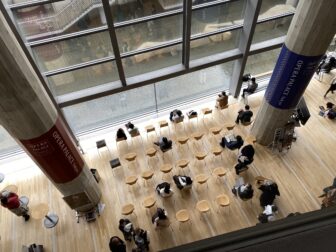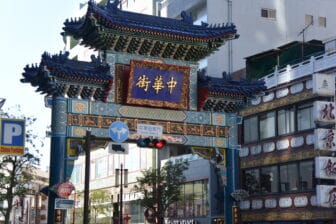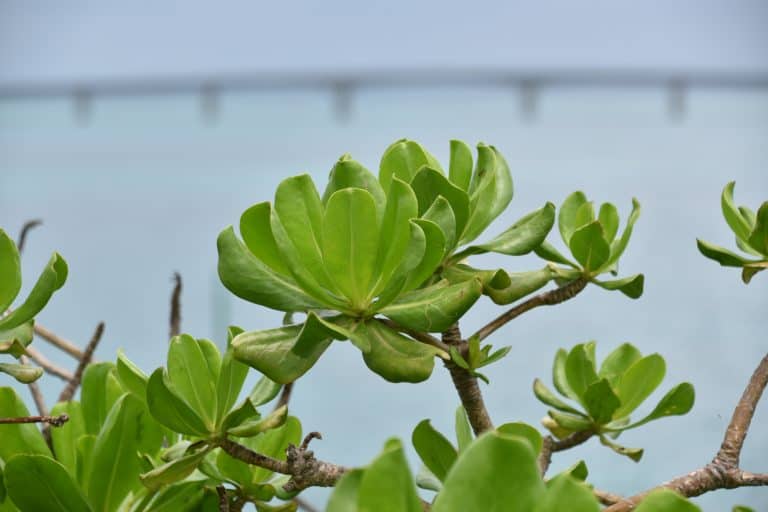
[ Apr.2019 ] On the fourth day on Miyako-jima, one of the islands in Okinawa prefecture in Japan, we hired a taxi again and this time went to Ikema Island, which is in the north of Miyako-jima.
That is because someone had said that the sea there was the most beautiful.
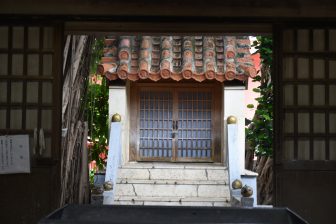
Before going north, our driver, Mr. Nohara, took us to Pyarumizu-Utaki in Hirara-cho, the main town in Miyako-jima.
This Utaki looked like an ordinary Japanese shrine, but it is a unique religious place for people in Okinawa.
According to Mr. Nohara, there is a divine woman in every Utaki who links this world and the other world.
She listens to people’s wishes and prays for them.
There are some ordinary shrines on Miyako-jima, too, but there are more Utakis and they are more popular, apparently.
After that, we headed north.
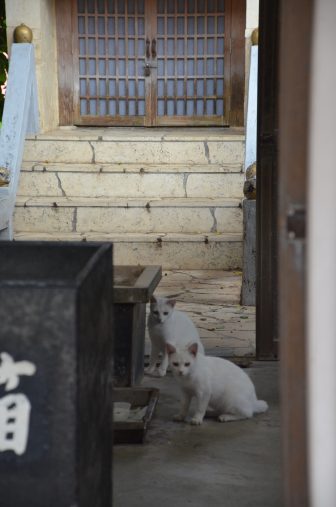
Mr. Nohara was very talkative.
He was born in Naha, the capital of Okinawa prefecture and he was 70.
He was living on Miyako-jima because he had been transferred for work and he had reached retirement age here.
Then he had gone back to Naha, but people on Miyako-jima had invited him back, saying there was a shortage of taxi drivers.
So he had come back to the island and has been working as a driver for eight years.
He loves Awamori, the local strong drink, but his way of drinking sounded unique.
He adds ice and water and on top of that adds some coffee.
“I drink 4-5 glasses of this cocktail everyday” he said.
Mr. Nohara is concerned about the Bubble Economy on Miyako-jima, too, just like the other driver we had met, and he said he was afraid of water shortages.
We crossed Ikema Ohashi bridge to Ikema Island.
Ikema Ohashi bridge is the oldest of the three bridges connecting Miyako-jima and surrounding islands.

It opened in 1992 and its length is 1,425 metres.
Half of Ikema Island is marshland and it is full of wildlife.
Mr. Nohara told us “People on Ikema are famous for their stubbornness. They have refused every project which would make them richer, for example, building the natural trail walk in the marshland”.
Although it is very close to Miyako-jima, the language is different.
The main industry of Ikema Island is fishing bonito.
There is a huge coral reef, which people call ‘a phantom land’, in the sea north of this island.
The real name of this place is Yabiji and people snorkel here.
There was a glass boat service on Ikema Island and we had thought that this boat would go to Yabiji, so we joined them, but in fact, it did not go there.
Instead, the boat went to another coral reef near the other small island, called Ogami Island, which is about 4km away from Miyako-jima and not connected by a bridge.
The boatman was a rather eccentric middle-aged man who could be one of the stubborn islanders described by Mr. Nohara.
We crossed Kuroshio Current on the way.
Kuro means black in Japanese and it was really black, which was clearly different from the other part of the sea.
They fish tuna and bonito here.

The main purpose of this glass boat tour was to see coral, not fish.
There are many kinds and shapes of corals, but here we saw mainly the branching ones, called Staghorn Corals, and many of them were blue.
I remember seeing similar ones on Ishigaki Island two years ago.
Unfortunately, the weather was not particularly nice on the day and the colour of the sea was dull, so when the boatman repeated “It will be very nice swimming here among the corals”, I did not really feel like it.
My husband, who has some knowledge about the sea, asked “Have the corals changed recently?”.
The man nodded gravely and said that they have changed a lot in the last 7 years.
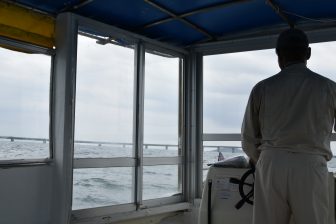
He told us that in the past, this area had more colourful coral reefs and said “They were like gemstones” .
It has changed because of global warming.
He also said that in the past, there were many celebrities visiting here, including the actress, Ruriko Asaoka, who was a repeater.
This tour took about one hour as it took quite a long time to get to the coral reef area and it cost 3,000 yen (£21.8, €24.7, $27.7) each, which was not cheap.

